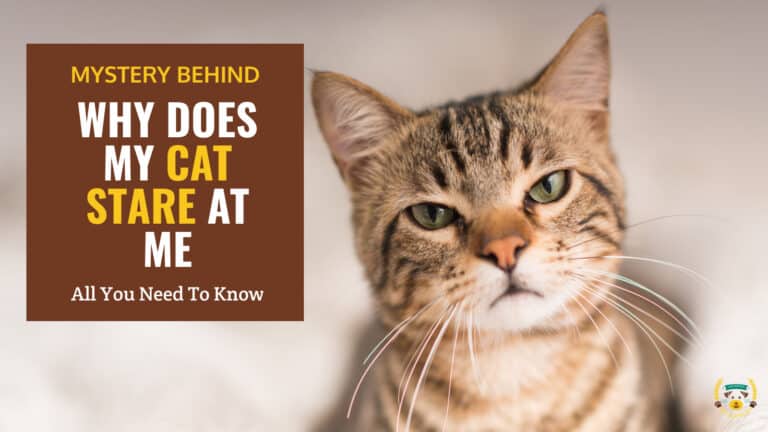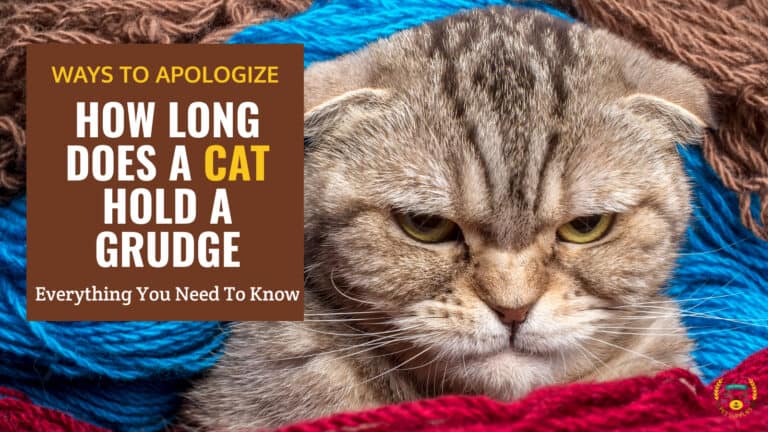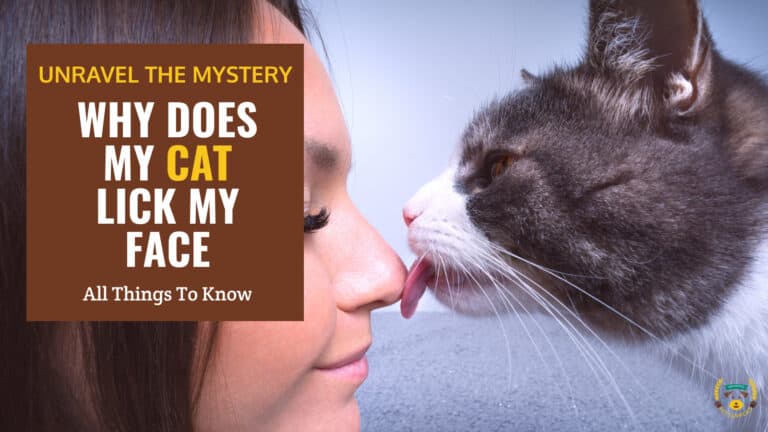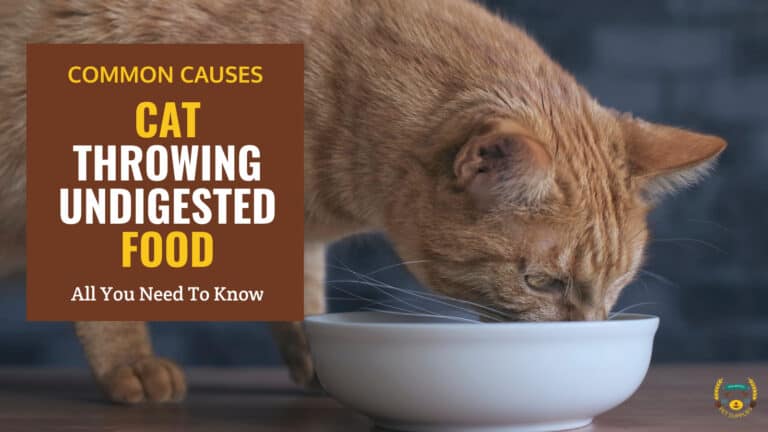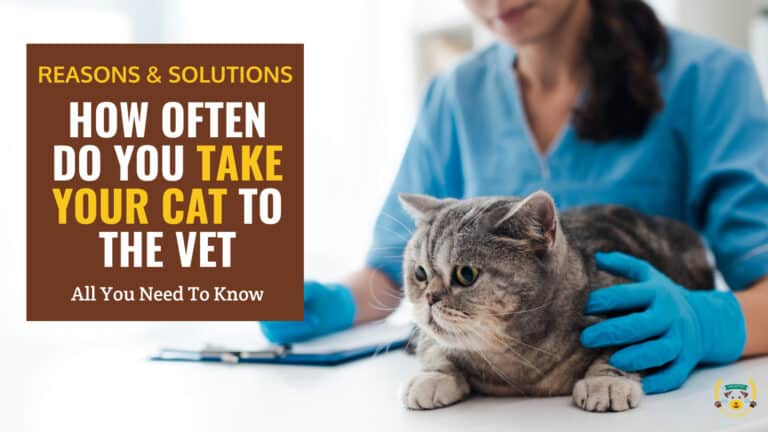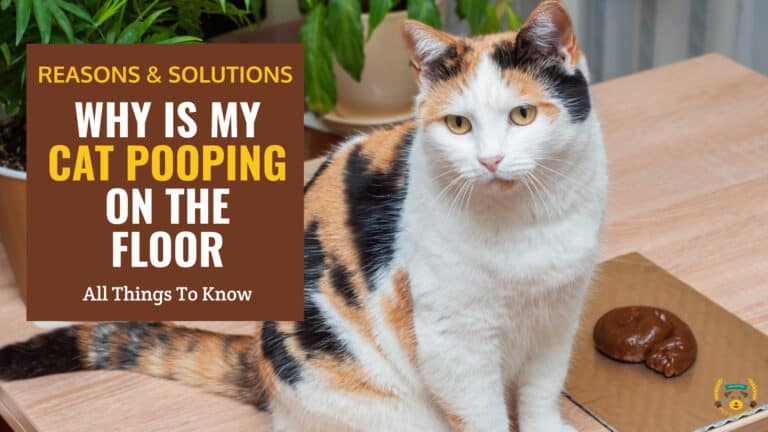How Often Should You Feed Your Cats?
Last updated: March 15, 2024
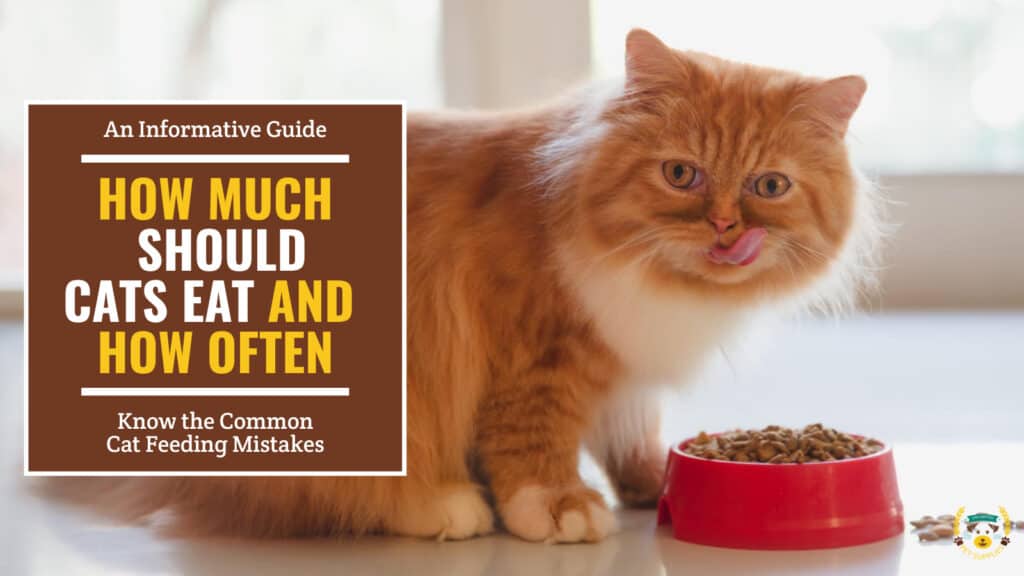
Summary
- Overfeeding is the most common cause of overweight and obese cats.
- Underfeeding can also lead to health problems.
- Feeding only dry food can cause urinary tract problems.
- Cats need access to fresh water at all times.
- Feed your cat a balanced diet that's appropriate for their age, health, and lifestyle.
- Be aware of the signs of food intolerance and allergies in cats.
- A vegan or vegetarian diet is not appropriate for cats.
- Cats are carnivores and need meat in their diet.
- Consult with your veterinarian before making any changes to your cat's diet.
- A regular feeding schedule can help to prevent health problems.
Cats are generally regarded as royalty in the home, with their devoted owners eager to cater to their every whim. The temptation to feed your cat whenever they ask for it rather than keep to a feeding plan arises. Cats can quickly gain weight if this is allowed to continue.
Then, how many times a day should you feed a cat?
How Much Should You Feed Your Cat?
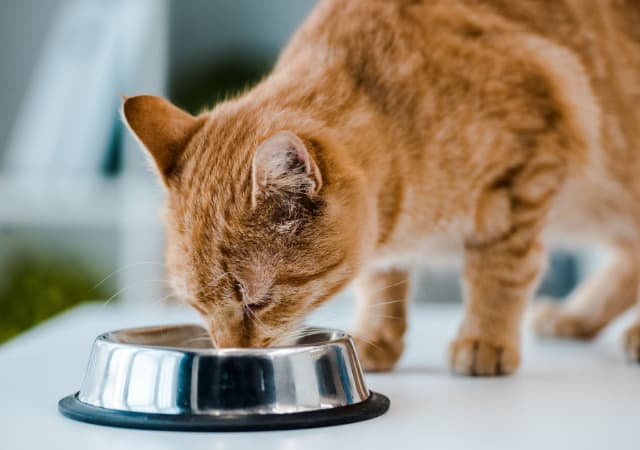
First-time cat parents often worry about whether or not they are providing their pets with the proper nutrition.
Calorie content and serving size differ between canned and dry cat food. Whether you provide dry food, wet food, or a combination of the two, make sure you're giving your pet the right amount of food each day.
An estimate of your cat's daily calorie needs can be found on its food container. You'll need to figure out where your cat falls within the range of the recommendations. No matter what, you may always make adjustments to match your cat's specific requirements.
Visit the manufacturer's website or call them directly if you have questions about how much of a particular food to feed your cat. You should always consult with your veterinarian if you have any questions about how much food to give your cat.
How Much Wet Food or Dry Food to Feed a Cat
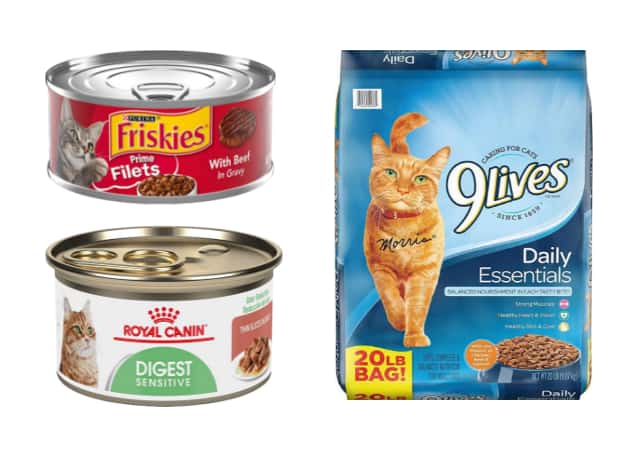
If your cat suffers from lower urinary tract disease, constipation, weight gain, or vomiting undigested food, wet food may be a better option than dry food. Food puzzles and food toy dispensers can be made more fun for thin cats with food volume restrictions by feeding them a dry diet [1].
Healthy, energetic 8-pound adult cats need roughly 30 calories per pound per day, says the Animal Medical Center in New York. In other words, an 8-pound cat needs 240 calories per day on average.
About 250 calories are found in each 6-ounce canned food, and about 300 calories are found in each cup of dry food. Cats who weigh 8 pounds or more need about 4/5 of a cup of dry food or one 6-oz can of wet food each day. If your cat prefers more or less dry or wet food, you can modify the quantities accordingly.
Factors that Affect How Much to Feed a Cat
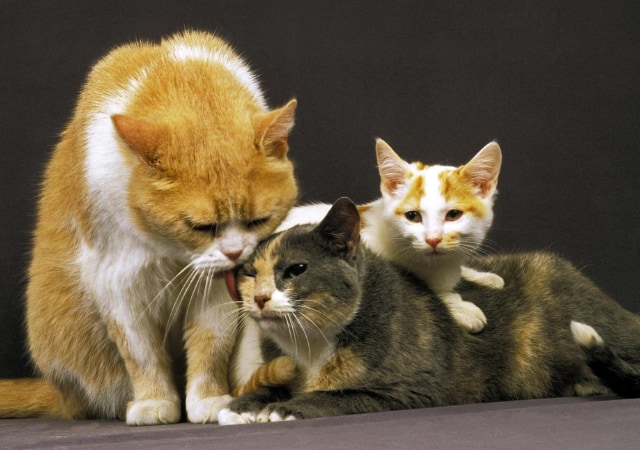
A cat's daily caloric intake is influenced by several factors, such as the following:
Age
A kitten needs more food per pound of body weight compared to an adult cat. Therefore they should be fed more frequently to keep up with their rapid growth. Kittens who aren't yet six months old may need three meals a day of growth.
Size
It's also critical to determine the type of cat you have and how much exercise they get. Giant cats, such as Maine Coons, can weigh up to 30 pounds in good health. If you have a large cat, you'll need to feed them more frequently. As a rule of thumb, an energetic cat that likes to play needs more food than a sedentary one that sleeps all day. If your cat likes to play by themselves a lot, you might want to give them a little more food, especially if they are always hungry.
Weight
Working closely with your veterinarian will be necessary if your cat is either underweight or overweight. Measured food amounts should always be given to overweight cats, especially those with diabetes or other health issues.
Activity Level and Metabolic Rate
Cats who engage in regular physical activity burn more calories than those who prefer to lounge about the house. Additionally, due to physiologic variations, a cat's resting metabolic rate may range from the norm.
Indoor versus Outdoor
Indoor cats typically don't receive as much exercise as outdoor cats, which means they'll need fewer calories to maintain their body weight than their outdoor counterparts. Outdoor cats in colder climates would necessitate additional food during the winter months. Here's a review of the top cat foods for indoor cats.
Body Condition and Health
Your cat's food pattern may need to be adjusted if they are suffering from a health ailment. Medication should be taken with food in the case of cats, as an example. You'll need to feed your cat twice a day if you give them medicine twice a day.
Cats with certain medical issues may need to feed less frequently because of this. Consult your veterinarian if your cat suffers from any chronic diseases that could alter their food routine.
Because of a medical condition, some cats have an abnormally large appetite. Cats with hypothyroidism, for example, may crave food all the time because of their condition. However, this does not imply that you should constantly provide food for them. However, you should not increase their feedings above two to three times a day.
Most of the time, you want to treat the underlying problem, not just alter your dietary regimen. However, adjusting the frequency of your cat's meals may be the best option in some circumstances.
Reproductive Status
A cat's calorie needs are reduced by spaying and neutering. To satisfy the high nutritional demands of reproduction, most pregnant and lactating cats should have access to a meal that is appropriate for kittens or all life stages.
How Often Should You Feed Your Cat?
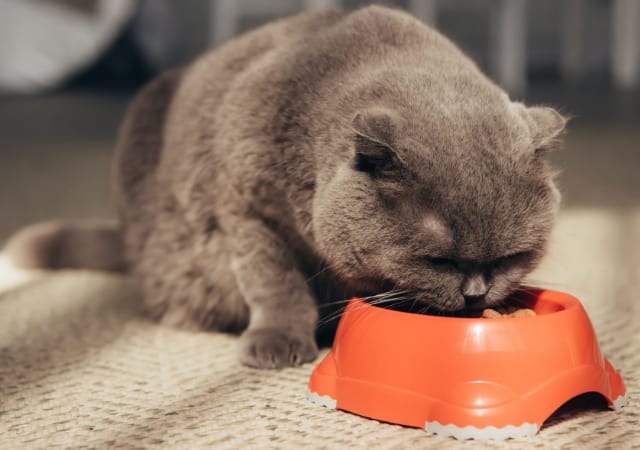
Ad libitum or 'free choice' feeding is the practice of giving a kitten as much food as it wants all at once. That's not a good idea since it encourages binge eating and sets the scene for various orthopedic and diabetic issues. This can lead to stomach pain and bloating, which slows down digestion. There is a widely accepted "set point" for the size of a cat's adult body. To maintain a healthy weight as an adult, kittens should grow at a more moderate pace.
Some cats, like cows, want to eat all day long (and night). Others prefer to eat at a specific time of the day and will not let you forget.
Keep in mind that the most important thing is to make sure you aren't providing them more calories than they require daily, whether you leave food available all the time, serve numerous meals, or simply two meals a day. When your cat's food bowl is empty, don't merely restock it; this might lead to weight gain or obesity. Not all cats are adept at controlling their appetites during meals.
What If My Cat Is Already Overweight?
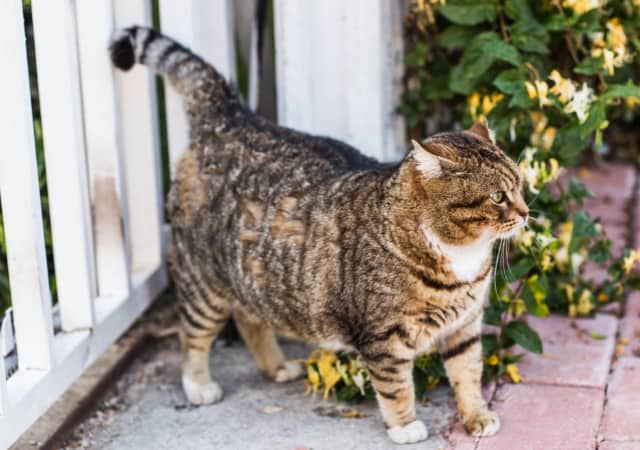
A cat's weight can be difficult to determine. The best way to tell if your cat is obese is to place your hands on them and feel their skin. Bones and skin should still be visible underneath. You can't only judge a cat by its appearance when it has a lot of furs because the fur hides the body's size.
It doesn't matter what kind of diet your cat is on; restricting access is essential. Also, a scale is useful for correctly weighing the cat. Using one of these methods, you can weigh your cat on a digital scale. It is sufficient to weigh your cat monthly at the same time each day.
We want to lose roughly a pound a month, not more. In cats, sudden weight loss may pose a health risk. There are no shortcuts to losing weight in a cat; it's an active activity that must be undertaken.
Each cat's treatment plan is unique, and coping with the behavioral ramifications of a hungry feline can be one of the most difficult aspects. In spite of what a starving cat may think, people have a hard time accepting that a healthy, happy cat does not require immediate medical attention [2].
Cat Feeding Mistakes
The nutrition of your cat has a significant impact on its general health. Thus, it should be carefully planned and maintained. Nutritional needs, physical appearance, and way of life should all be taken into consideration while designing a cat's diet. It's easy to overindulge our feline friends, so be careful not to overdo it. Here are some of the most typical feeding blunders to keep in mind when it comes to your cat.
Overfeeding your cat
More than 60% of cats in the United States are either overweight or obese, according to a 2017 report from the Association for Pet Obesity Prevention [3]. In order to help your cat live a long and healthy life, controlling their weight is the best way to express your affection.
Underfeeding
It is common for cats to want to consume multiple smaller meals throughout the day. The amount of food required by a cat is determined by a variety of factors, including age, food type, weight, and activity level. In the long run, overfeeding your cat can lead to obesity and health problems. On the other hand, underfeeding your cat can lead to weight loss and illness.
Feeding only dry food
Domestic cats, like their desert-dwelling forebears, have retained the ability to thrive on very minimal water intake, but limiting their diet to dry kibble exclusively could lead to urinary tract problems in the future. The worst aspect is that treatment for these infections is never cheap!
Giving little water
Water is essential for both humans and pets. A cat's body weight is 60 to 70% water meaning they can't survive without it. As a result, it is imperative that they be well-hydrated at all times, especially in the sun or during periods of extremely high temperatures. Your cat's favorite nook or corner should have water available for them to drink, so keep an eye out for it. You can find out if they prefer bottled water or drinking from the tap. Let them do their thing once you've figured this out!
Feeding a diet with inadequate nutritional content
According to experts, the demand for homemade cat and dog food is on the rise. The fact that something is created at home does not necessarily guarantee it is nutritious.
Vitamin A toxicosis, which causes the bone and joint discomfort, brittle bones, and dry skin in cats, can be caused by a diet high in tuna, liver, or liver oil (such as cod liver oil). Too much raw fish in your cat's diet might deplete their body of the vitamin B1 necessary for healthy muscles and nerve function. Talk to your veterinarian, who can help you avoid food fads and push toward a balanced, healthy diet for your cat.
Ignoring signs of food intolerance
A cat's food intolerance is not exactly life-threatening, but it is uncomfortable for your cat. It affects the digestive system, resulting in an upset stomach, bloating, gas, and diarrhea. Itching and scratching in your cat may indicate an allergic reaction to a particular meal rather than merely a dietary intolerance.
Vaccines, shellfish, and insect stings can all cause serious reactions in some cats. These may cause the body to go into anaphylaxis, which causes the blood pressure to drop to dangerously low levels, making it difficult to breathe and can cause your cat to slip into unconsciousness. A veterinarian should be contacted immediately in order to preserve the cat's life.
Read More: 10 Best Cat Foods For Sensitive Stomach
Going vegan
While a vegan or vegetarian diet may be good for you, it's not good for your cat. Cats, unlike dogs and humans, require particular nutrients that can only be found in meat.
Cats get most of their protein from meat and other animal sources because they are carnivores. Their digestive system is more suited to digesting animal-based protein than plant-based protein.
Dietary protein is composed of ten essential amino acids that neither cats nor dogs can produce on their own. Many physiologically active compounds and proteins rely on these essential amino acids, which are also known as "non-essential amino acids." They also give the carbon chains required to create glucose, which is used as a fuel source. The necessary amino acids are well-balanced in high-quality proteins.
Final Thoughts
It's essential that you know how much food your cat needs, as their dietary needs can vary greatly from one cat to the next. Proper feeding would not only provide them with all of the necessary nutrients but would also help prevent them from acquiring certain significant health concerns.
You should always consult with your veterinarian before making any changes to your cat’s diet. Establishing and adhering to a regular feeding schedule makes everyday life easier.
References:
- What should I feed my cat? Wet versus dry food. International Cat Care. Retrieved from https://icatcare.org/what-should-i-feed-my-cat-wet-versus-dry-food/
- How to Feed Your Cat So It Stops Begging and Starts Losing Weight. Companion Animal Clinic. Retrieved from https://companion-vets.com/topics/nutrition/cat-feeding-guide-stop-begging-lose-weight/
- Pet Obesity Prevention. U.S. Pet Obesity Rates Plateau and Nutritional Confusion Grows. Retrieved from: https://petobesityprevention.org/2018

